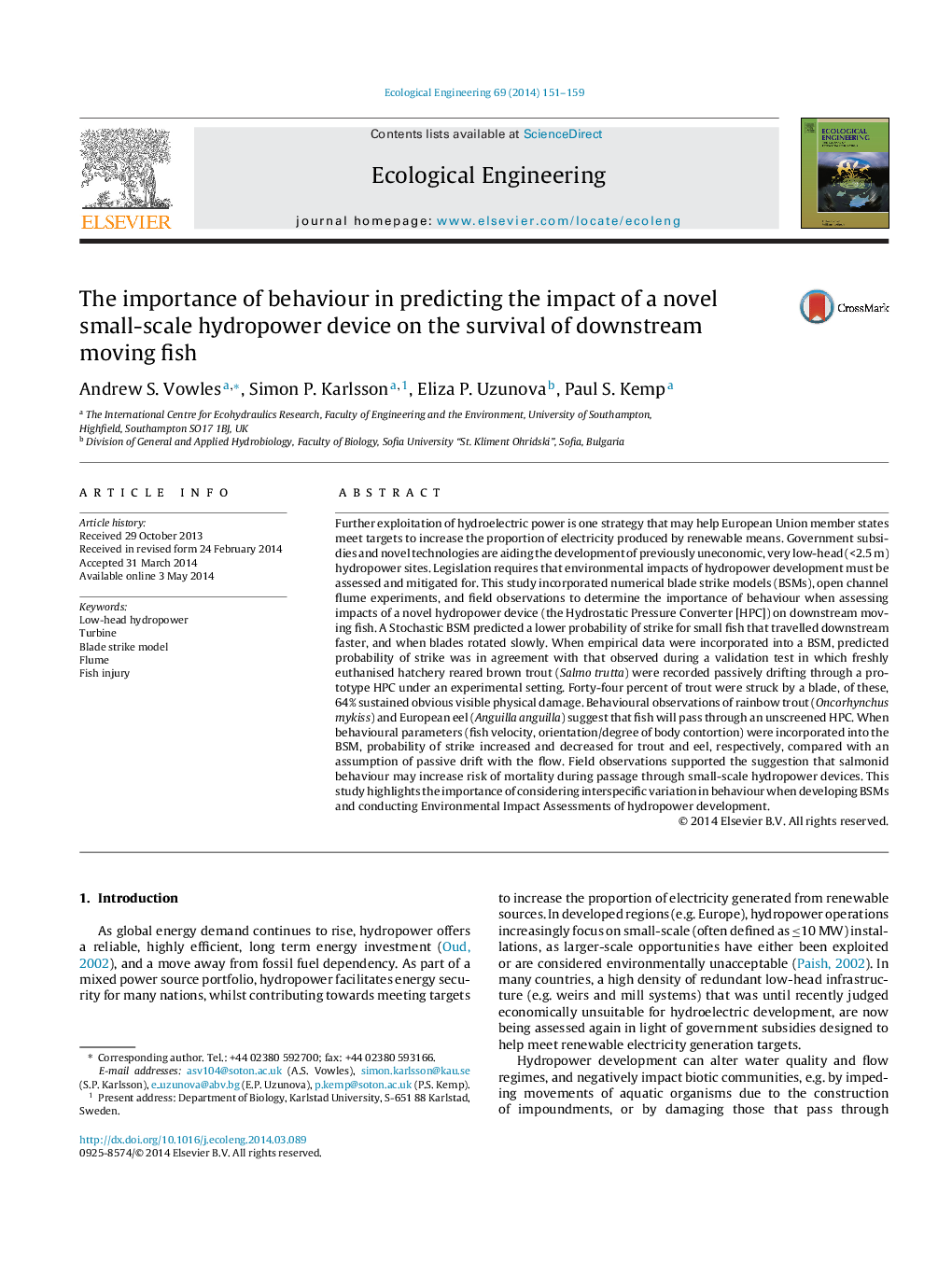| Article ID | Journal | Published Year | Pages | File Type |
|---|---|---|---|---|
| 4389385 | Ecological Engineering | 2014 | 9 Pages |
•Impact of a small-scale hydropower device on downstream moving fish was assessed.•Blade strike was related to fish length, swimming speed, and blade rotational speed.•Strike increased and decreased for trout and eel when behaviour was considered.•A pinch point created by the hydropower device caused damage to euthanised fish.•A field study supported observations from flume experiments and blade strike models.
Further exploitation of hydroelectric power is one strategy that may help European Union member states meet targets to increase the proportion of electricity produced by renewable means. Government subsidies and novel technologies are aiding the development of previously uneconomic, very low-head (<2.5 m) hydropower sites. Legislation requires that environmental impacts of hydropower development must be assessed and mitigated for. This study incorporated numerical blade strike models (BSMs), open channel flume experiments, and field observations to determine the importance of behaviour when assessing impacts of a novel hydropower device (the Hydrostatic Pressure Converter [HPC]) on downstream moving fish. A Stochastic BSM predicted a lower probability of strike for small fish that travelled downstream faster, and when blades rotated slowly. When empirical data were incorporated into a BSM, predicted probability of strike was in agreement with that observed during a validation test in which freshly euthanised hatchery reared brown trout (Salmo trutta) were recorded passively drifting through a prototype HPC under an experimental setting. Forty-four percent of trout were struck by a blade, of these, 64% sustained obvious visible physical damage. Behavioural observations of rainbow trout (Oncorhynchus mykiss) and European eel (Anguilla anguilla) suggest that fish will pass through an unscreened HPC. When behavioural parameters (fish velocity, orientation/degree of body contortion) were incorporated into the BSM, probability of strike increased and decreased for trout and eel, respectively, compared with an assumption of passive drift with the flow. Field observations supported the suggestion that salmonid behaviour may increase risk of mortality during passage through small-scale hydropower devices. This study highlights the importance of considering interspecific variation in behaviour when developing BSMs and conducting Environmental Impact Assessments of hydropower development.
